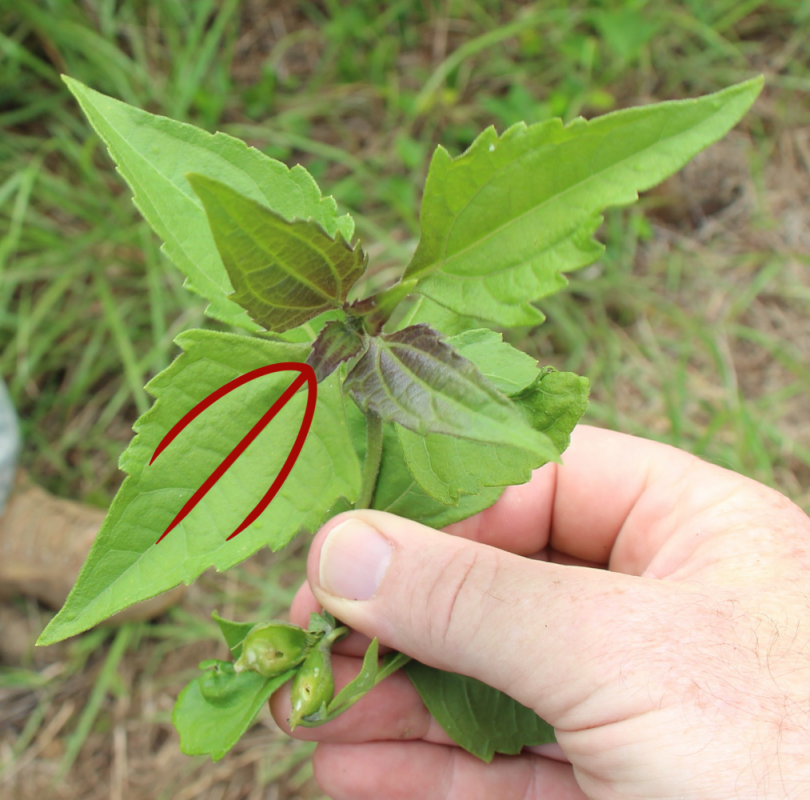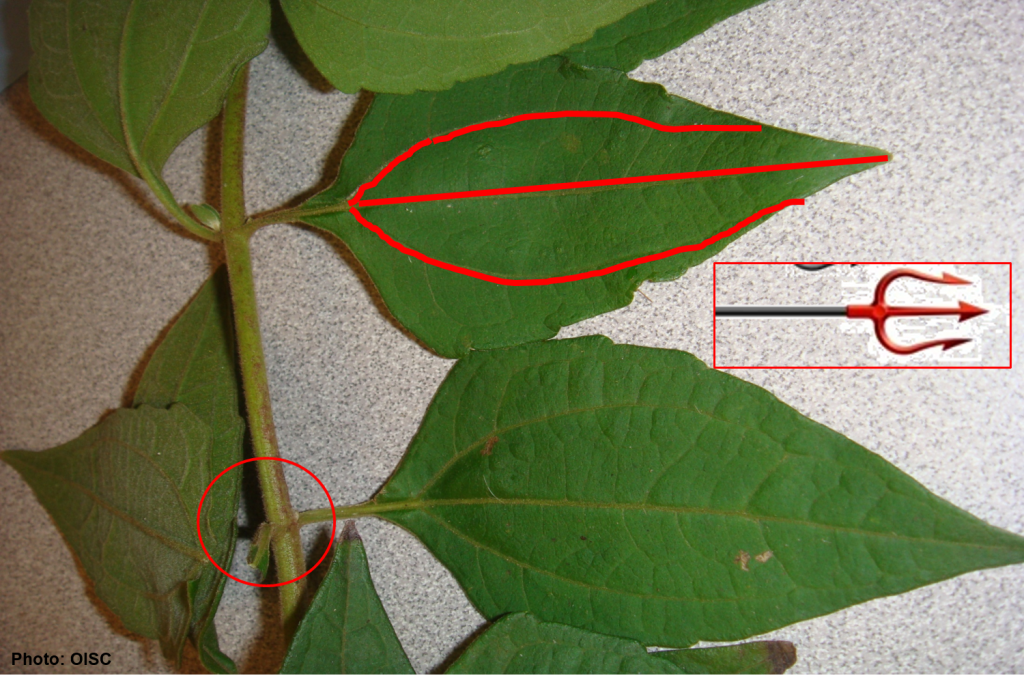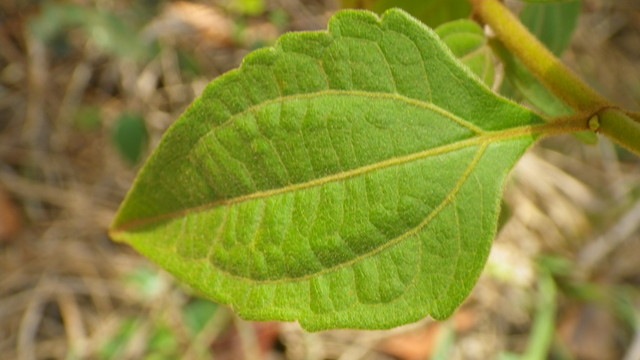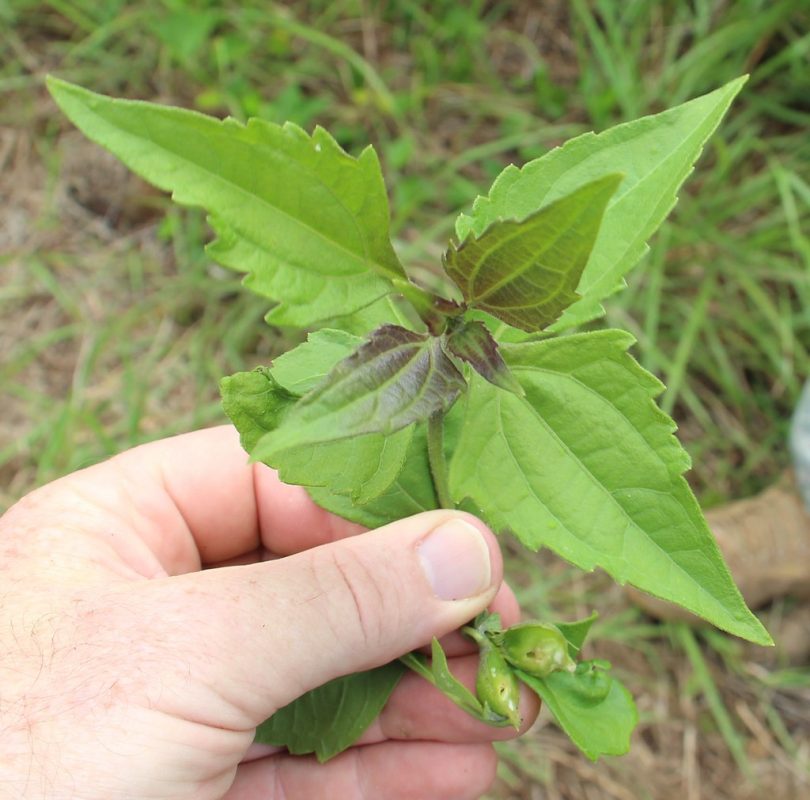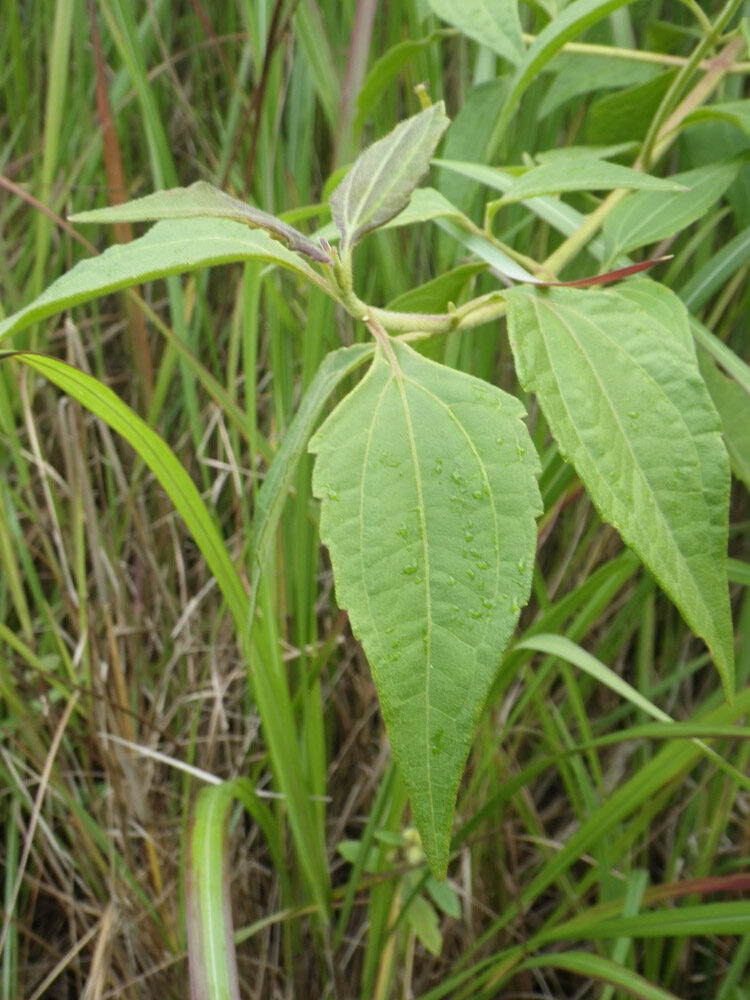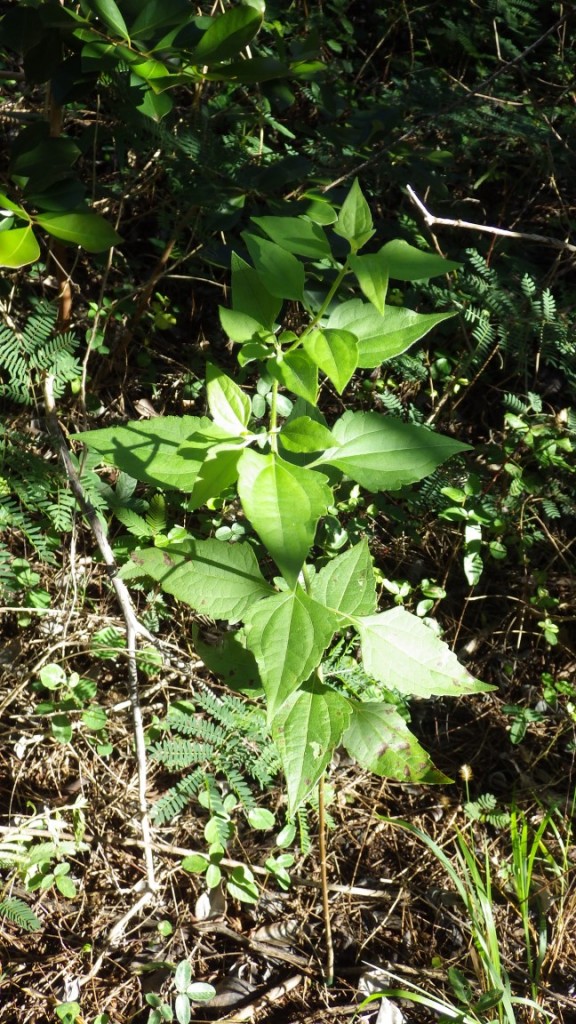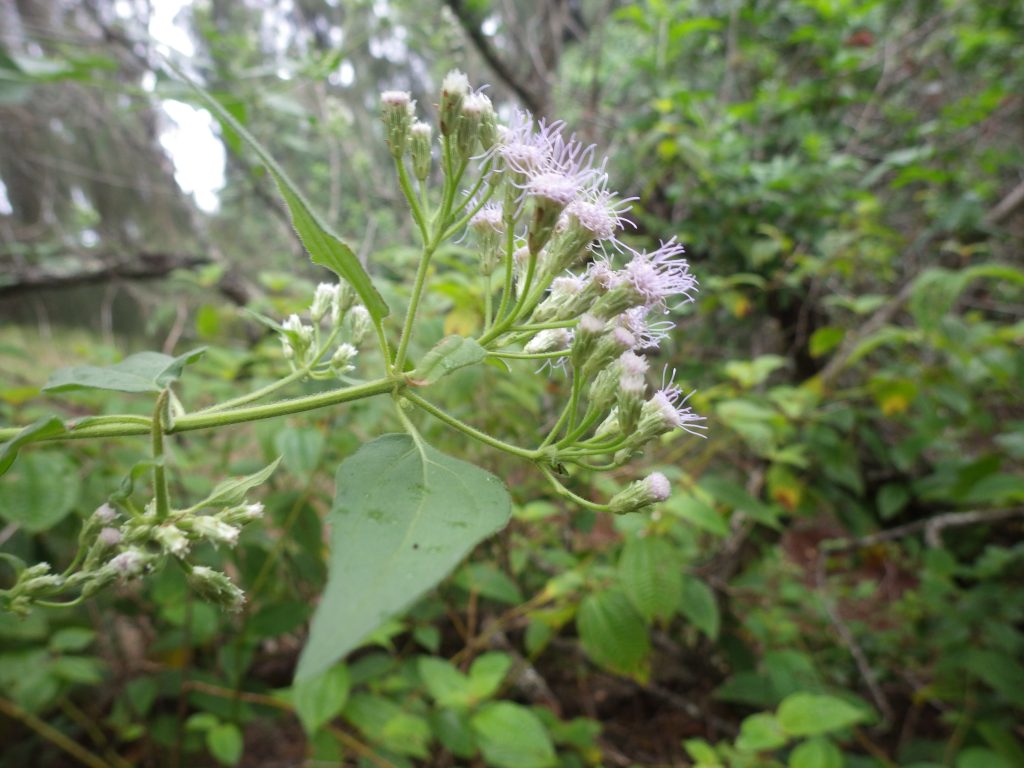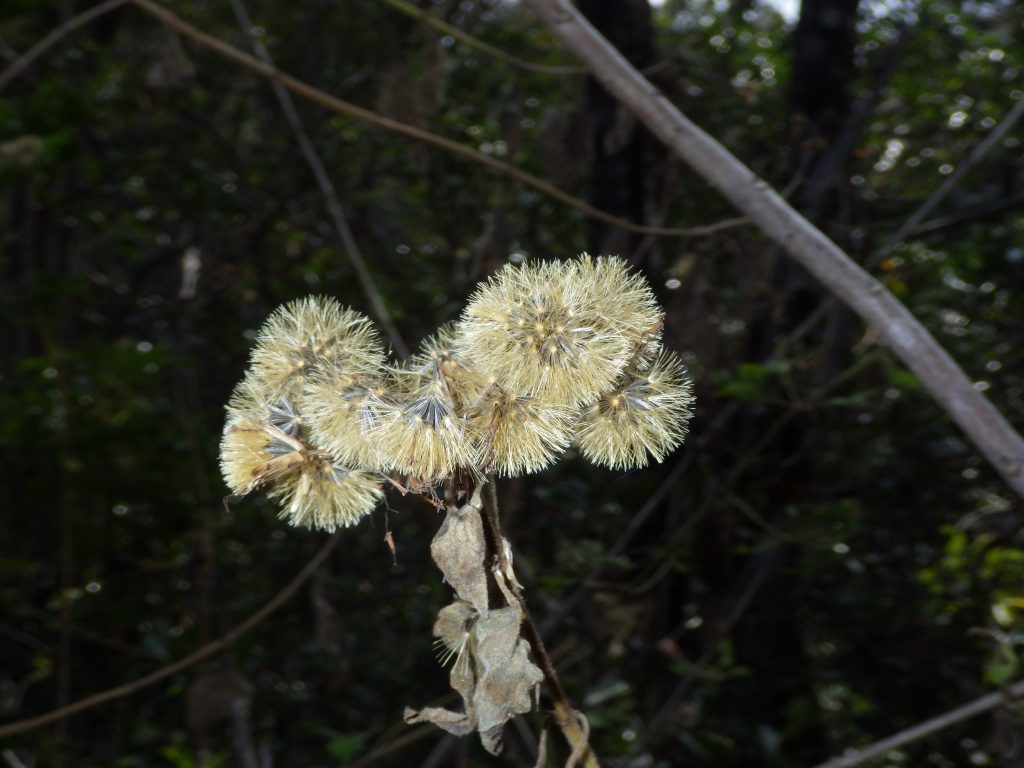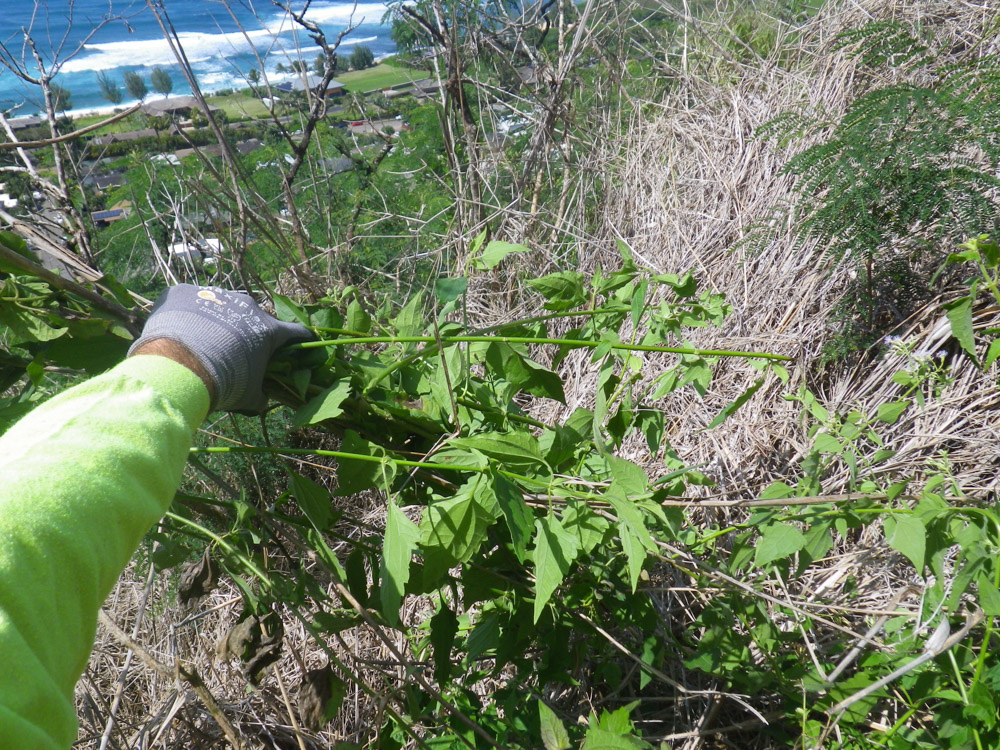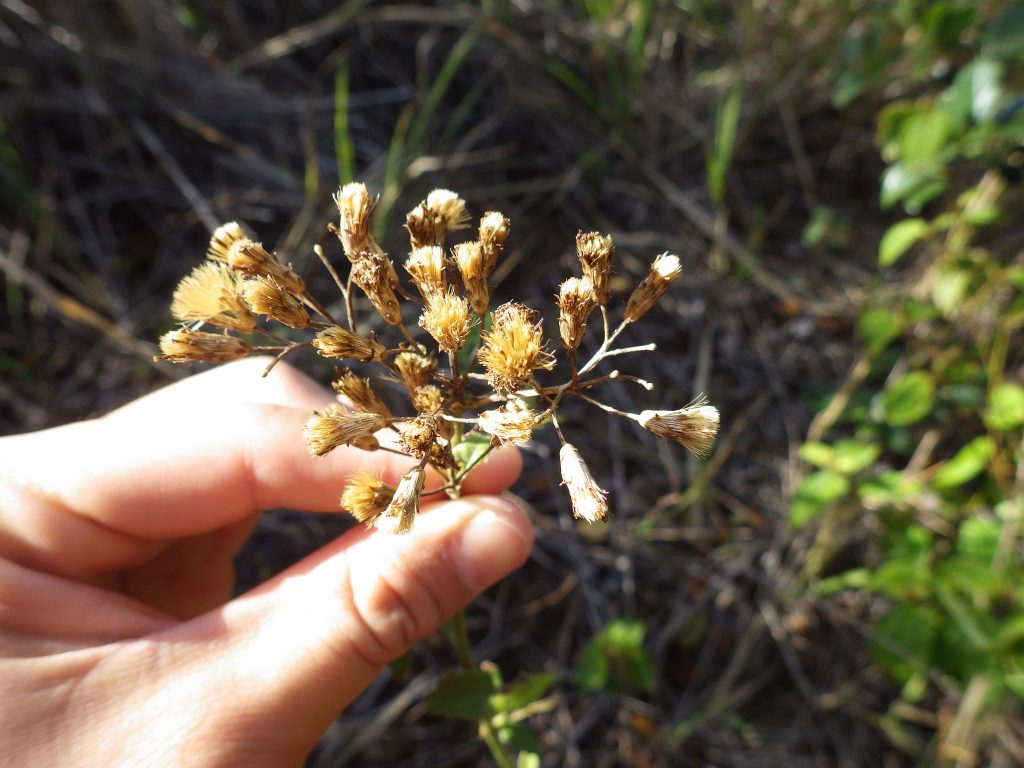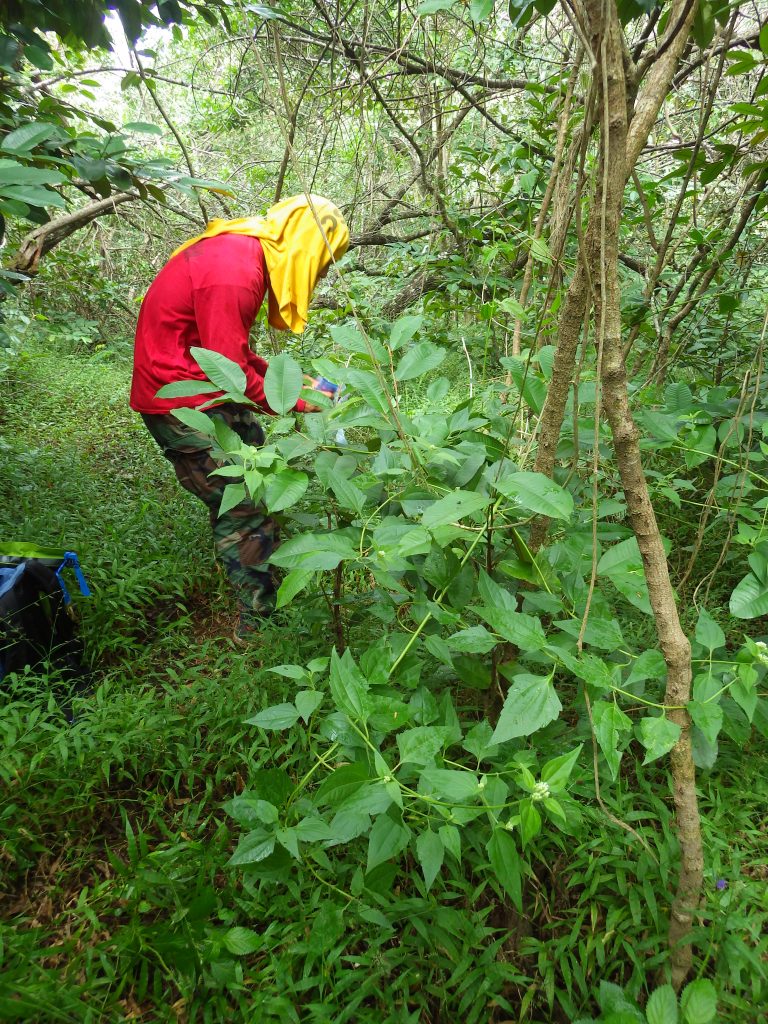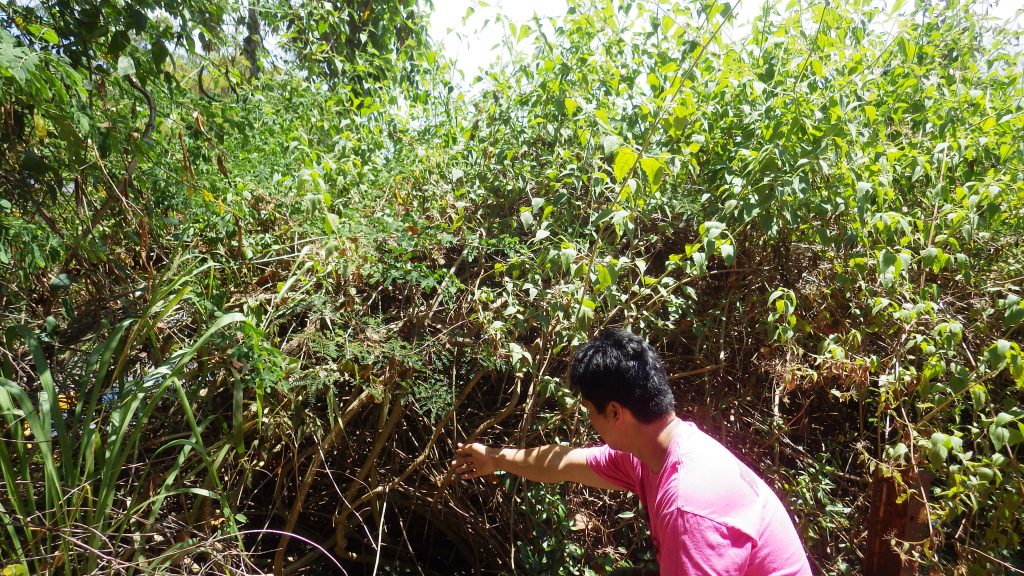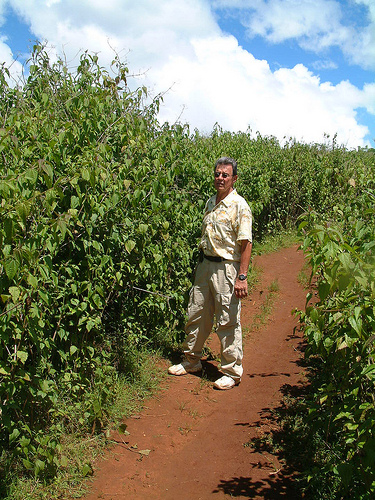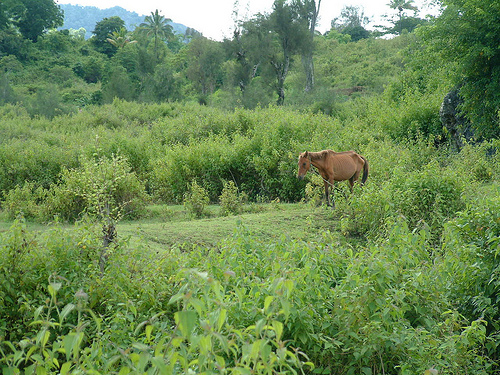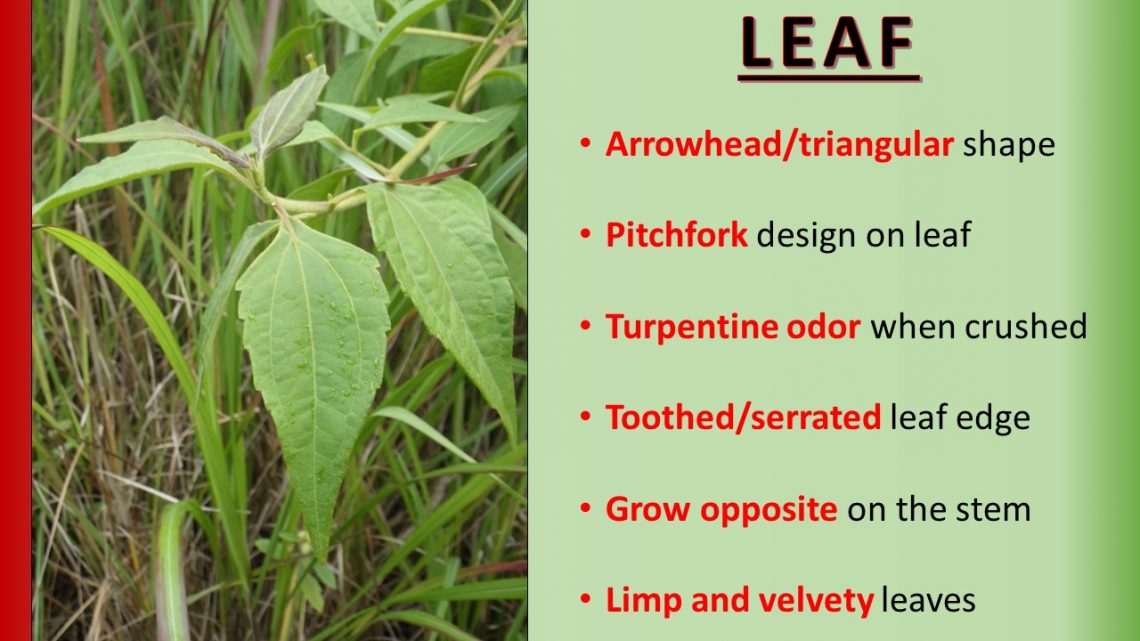Are you finding devil weed? Pull plants and throw away in trash (NOT greenwaste). You can also report devil weed locations to OISC. Send photo and location to www.643pest.org or you can email oisc@hawaii.edu or text 808-286-4616.
Devil weed (Chromolaena odorata)
Family: Asteraceae
Devil weed (A.K.A Siam weed, bitter bush) is a well-documented pest and is considered one of the world’s worst 100 invasive species. It is highly invasive and is on the Hawai’i State Noxious Weed List. Devil weed received an extremely high score on the Hawai’i Weed Risk Assessment (HWRA), suggesting it has the potential to be exceedingly invasive in Hawai’i.
Description:
- Herb or shrub with long rambling branches
- Leaves are triangular shaped, opposite, with a toothed leaf edge. Leaves are also limp with velvety hair and have a distinct turpentine smell when crushed.
- The leaves have three thick veins shaped like a pitch fork, hence the common name “devil weed.”
- Flowers are held in small clusters. Pale purple to off-white, usually with distinct long stamens.
- Fruits are tiny and have soft white hairs, which allow it to be spread on the wind or water. The hairs also act like Velcro, attaching themselves to anything passing by.
- Native to tropical America.
Harm:
- An aggressive colonizer of clearings and wet disturbed forests, creating dense thickets that impede growth and regeneration of native species.
- Forms dense thickets 4-6 feet high.
- Forms thick canopy that shades out other plants.
- Releases toxins into the surrounding soil, reducing growth of other plants.
- Toxic to livestock.
- Forms monocultures, reducing biodiversity.
- Consumes large amounts of water and negatively affect soil nutrient levels.
- Can host pests and pathogens of kava/awa (Piper methysticum).
- Each plant can produce 800,000 seeds each year, which are readily wind dispersed.
- Sand-grained sized seeds are also easily spread by birds and other animals when they eat the fruit, and by people when dirt or mud containing the seeds stick to shoes, clothing, equipment, or vehicles.
On O’ahu:
- First detected in 2011 at the Kahuku Training Area/Kahuku Motocross Track, devil weed is now found in Kahana Valley, Pūpūkea and in ’Aiea. OISC is working to reduce these populations, but detections have been popping up across the island.
- OISC’s management goal for devil weed was island-wide detection and eradication, however it has now had several long-range introductions to all sides of the island. It is now beyond OISC resources to eradicate island-wide.
- Decontamination of hiking gear, bikes, and hunting gear between use is necessary to prevent it from spreading across O’ahu, as well as to other islands.
- Begin your hikes, trails and hunts with clean gear. Don’t introduce hitchhiking weed seeds to new areas.
- Early detection and removal are essential. Pull any devil weed plants out and throw away in garbage….NOT green waste.
- For more information about devil weed detections….please call OISC at 286-4616 or email oisc@hawaii.edu
- Join the Devil Weed Crew…volunteers that survey and remove devil weed from all Oahu trails. For more information, visit: Devil Weed Crew Page
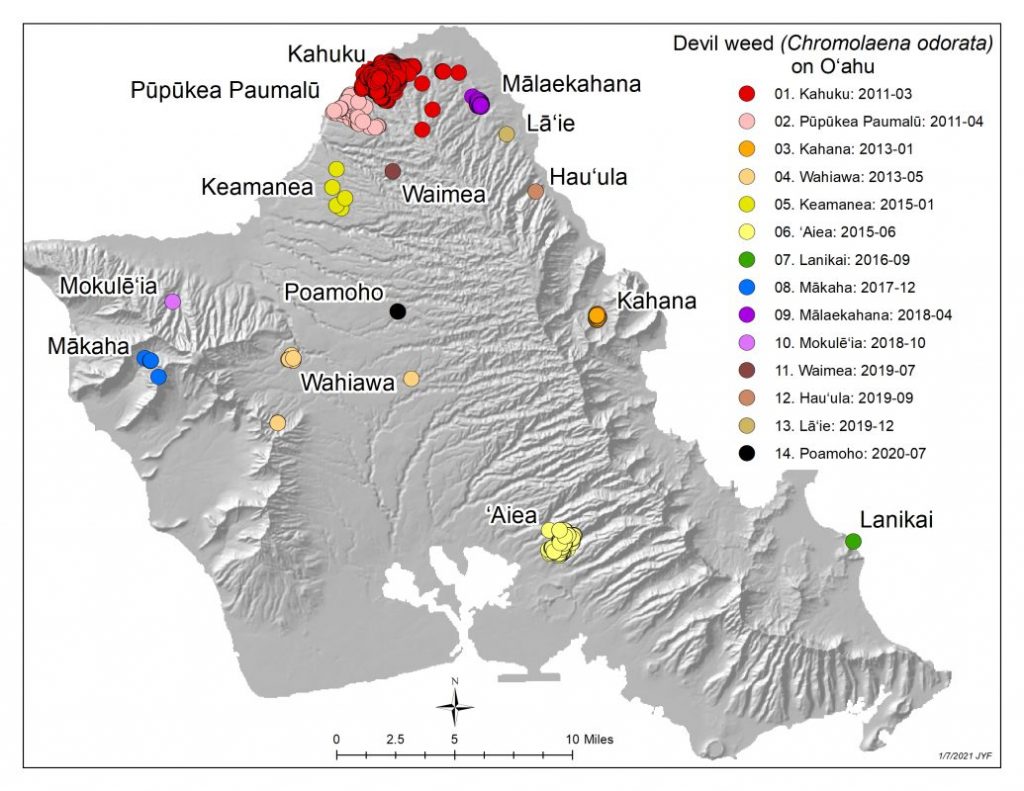
Pest Alert and Publications:
- Packet for Ranchers & Farmers
- Devil Weed Rack Card
- Devil Weed Pest Alert
- Chromolaena odorata Newsletter: Devil Weed in Hawaii
